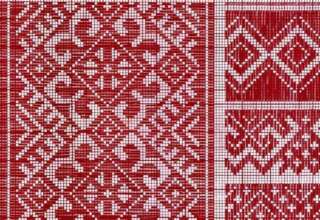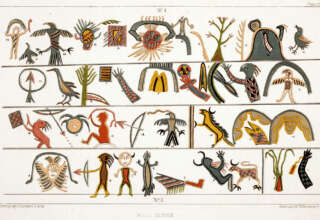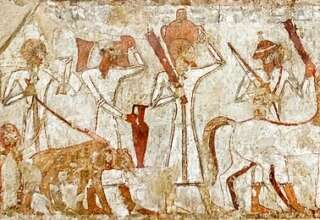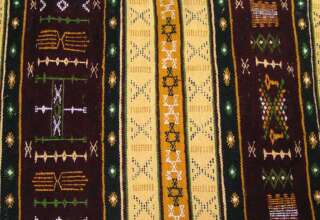
In the mid-19th century, primarily in the 1860s, most of the Navajo were forced to abandon their homes due to a series of military campaigns by the U.S. Army conducted with a scorched-earth policy and sanctioned by the U.S. government. The Army burned their homes and agricultural fields, and stole or killed livestock, to weaken and starve the Navajo into submission. In 1864, the main body of Navajo, numbering 8,000 adults and children, were marched 300 miles on the Long Walk to imprisonment in Bosque Redondo. The Treaty of 1868 established the “Navajo Indian Reservation” and the Navajo people left Bosque Redondo for this territory.
As no physical boundaries or signposts were set in place, many Navajo ignored these formal boundaries and returned to where they had been living prior to the U.S. occupation. A significant number of Navajo remained or moved near the Little Colorado and Colorado rivers, on Naatsisʼáán (Navajo Mountain), and some lived with Apache bands. The land allocated to many Navajo heads of household was initially not considered part of the reservation. Further, the federal government determined that land “left over” after all members had received allotments was to be considered “surplus” and available for sale to non-Native Americans. The allotment program continued until 1934. Today, this patchwork of reservation and non-reservation land is called the “checkerboard area”. It resulted in the loss of much Navajo land. In the southeastern area of the reservation, the Navajo Nation has purchased some ranches, which it refers to as its Nahata Dził, or New Lands. These lands are leased to Navajo individuals, livestock companies, and grazing associations.
In the traditional Navajo culture, local leadership was organized around clans, which are matrilineal kinship groups. Children are considered born into the mother’s family and gain their social status from her and her clan. Her eldest brother traditionally has a strong influence on rearing the children. The clan leadership have served as a de facto government on the local level of the Navajo Nation.
In 1933, during the Great Depression, the Bureau of Indian Affairs (BIA) attempted to mitigate environmental damage due to over-grazing on reservations. Significant pushback was given by the Navajo, who did not feel that they had been sufficiently consulted before the measures were implemented. BIA Superintendent John Collier’s attempt to reduce livestock herd size affected responses to his other efforts to improve conditions for Native Americans. The herds had been central to Navajo culture and were a source of prestige.






